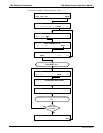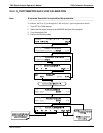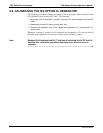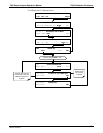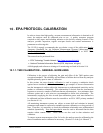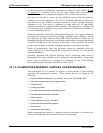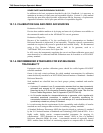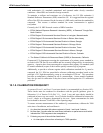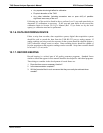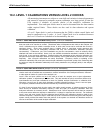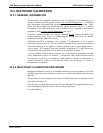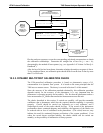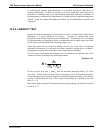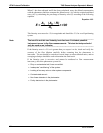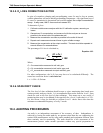
EPA Protocol Calibration T400 Ozone Analyzer Operator’s Manual
208
with authoritative O
3
standards maintained and operated under closely controlled
conditions. Other SRPs are located in foreign countries.
To maintain a uniform and consistent set of references, the US EPA maintains 9
Standard Reference Photometers (SRP) around the US. It is suggested that the regional
office of the EPA be contacted for the location of a SRP nearby and that the standards be
compared. This assures a uniform standard for ozone concentration is applied
everywhere.
Currently, the U.S. SRP Network consists of SRPs located at:
EPA's National Exposure Research Laboratory (NERL), in Research Triangle Park,
North Carolina
EPA's Region I Environmental Services Division in Lexington, Massachusetts
EPA's Region II Environmental Services Division in Edison, New Jersey
EPA's Region IV Environmental Services Division in Athens, Georgia
EPA's Region V Environmental Services Division in Chicago, Illinois
EPA's Region VI Environmental Services Division in Houston, Texas
EPA's Region VII Environmental Services Division in Athens, Georgia
EPA's Region VIII Environmental Services Division in Denver, Colorado
The State of California Air Resources Board (CARB) in Sacramento, California
Commercial UV photometers meeting the requirements of a primary ozone standard as
set forth in 40 CFR Part 50 are available and are currently being used by air monitoring
agencies. Agencies have been encouraged to compare their primary O
3
standards (and
O
3
transfer standards) as part of their routine quality assurance (QA) programs.
Additionally, to provide a reference against which calibration standards for O
3
must be
compared, the U.S. EPA has prescribed a reference calibration procedure based on the
principle of UV light absorption by ozone at a wavelength of 254 nm
1
. This procedure
provides an authoritative standard for all O
3
measurement. Ozone transfer standards
may also be used for calibration if they have been certified against the UV calibration
procedure.
3
10.1.5. CALIBRATION FREQUENCY
A system of Level 1 and Level 2 zero/span checks is recommended (see Section 10.2).
These checks must be conducted in accordance with the specific guidance given in
Subsection 9.1 of Section 2.0.9 (Ref. 11). Level 1 zero and span checks should be
conducted at least every two weeks. Level 2 checks should be conducted in between the
Level 1 checks at a frequency determined by the user. Span concentrations for both
levels should be between 70 and 90% of the reporting range.
To ensure accurate measurements of the ambient O
3
concentrations, calibrate the T400
at the time of installation, and recalibrate it:
1. Any time the instrument fails above regiment of Level 1 and Level 2 checks.
2. No later than 3 months after the most recent calibration or performance audit which
indicated the T400 response to be acceptable; or
3. Following any one of the activities listed below:
An interruption of more than a few days in T400 operation.
06870C DCN6332



